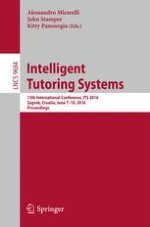2016 | OriginalPaper | Chapter
The Bright and Dark Sides of Gamification
Authors : Fernando R. H. Andrade, Riichiro Mizoguchi, Seiji Isotani
Published in: Intelligent Tutoring Systems
Publisher: Springer International Publishing
Activate our intelligent search to find suitable subject content or patents.
Select sections of text to find matching patents with Artificial Intelligence. powered by
Select sections of text to find additional relevant content using AI-assisted search. powered by
